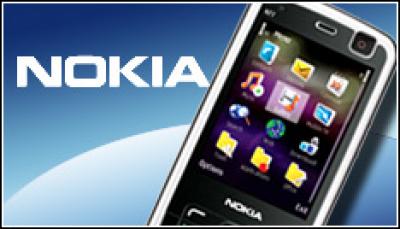Nokia Targets Emerging Markets With 110, 112 Handsets

Nokia has introduced the Nokia 110 and 112 handsets targeted firmly at emerging markets, such as India
Nokia’s fightback strategy will see it woo the North American market, as well as take on Research In Motion in developing markets. With its eye on the latter plan, the Finnish phone maker has now introduced the Nokia 110 and 112 phones.
Bright, feature-rich features phones with a youthful vibe, these devices speak to Nokia’s stated goal to get the world’s next billion people onto the Internet. The phones offer Internet browsing and technology that compresses Websites in the cloud, enabling users to consume 90 percent less data.
Data Costs
“Today’s mobile phone users want a quick Internet experience that allows them to discover great content and share it with their friends – but without being held back by high data costs,” Mary McDowell, Nokia’s executive vice president of mobile phones, said in a statement.
The phones, which have very subtle differences in design – the 110 also offers 10.5 hours of talk time to the 112’s 14 hours – feature 1.8-inch displays, access to Facebook and Twitter from their home screens, and a preloaded eBuddy instant messaging service that’s ready to use out of the box.
 In addition to the above-mentioned battery life – they also get nearly a month’s worth of standby time – they’re Dual SIM phones with Easy Swap technology. Users can move between SIMs – treating one SIM as a professional number, for example, and other for personal use – without removing the battery or turning off the phone. Easy Swap can also remember up to five different SIM cards, enabling users to – another benefit of multiple SIMs – better manage their costs.
In addition to the above-mentioned battery life – they also get nearly a month’s worth of standby time – they’re Dual SIM phones with Easy Swap technology. Users can move between SIMs – treating one SIM as a professional number, for example, and other for personal use – without removing the battery or turning off the phone. Easy Swap can also remember up to five different SIM cards, enabling users to – another benefit of multiple SIMs – better manage their costs.
Nokia, in the coming months, will also offer 40 games from Electronic Arts (EA) – including titles like Tetris and Need for Speed – to users of the 110 and 112, who will need to download the games within 60 days but then can keep them indefinitely for free.
Additionally, both phones feature a media player and FM radio, and what Nokia calls an improved VGA camera. Paired with 32GB of external memory, it’s enough to support more than 6,000 songs or 90,000 pictures. There’s Bluetooth, along with GPRS/EDGE connectivity, and colour choices of cyan, magenta and neon yellow. As McDowell notes in the statement, they’re for “young, urban consumers who want to do it all.”
New BlackBerry
Reuters reported 18 April on RIM launching a new BlackBerry in India, the success it’s experiencing in Indonesia, and the perception that RIM’s good luck in such markets has happened a bit by accident.
The story offered the example of an officer worker who had shifted from a Nokia device to a more trendy BlackBerry, though, at about $200 (£124), it cost him nearly two months’ salary.
“The biggest challenge for RIM is price,” Sarwoto Atmosutarno, CEO of one of Indonesia’s largest carriers, told Reuters. “Indonesia, like India, is a volume game industry.”
While Pakistan isn’t as developed a market as Indonesia, Nokia appears to have made an effort on the price side, and will sell the Nokia 110 for 35 euros and the 112 for 38 euros – or, approximately $45 (£28) and $49 (£30), respectively.
Both phones are expected to begin shipping in the third quarter.
How much do you know about smartphones? Take our quiz.